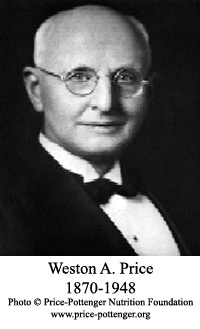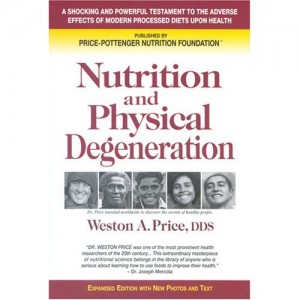RFNH = “Real Food Nutrition & Health” Study. My children and I will be working our way through Kristen Michaelis’ book, Real Food Nutrition and Health, during the fall and winter months as part of our homeschooling curriculum — and it looks like many of you will be joining us!
Click here to read more about the study and get the proposed schedule, as well as current and past downloadable discussion questions/activities each week — which you can save for the future if you’re not going to participate now.
We’re on chapter 2! Click here for Chapter 2’s discussion questions/activities (a free PDF download).
Chapter 2 was short, but sweet. Kristen introduced Weston A. Price, explaining who he was and what he did in a conversational, informative tone.
“In the 1930s, a dentist by the name of Weston A. Price started noticing an alarming trend: dental deformities, cavities, and dental diseases were on the rise. He wanted to discover why this was so.
He did what any good scientist would do. He formed a hypothesis and decided to test it. … He supposed that tooth decay correlates with other forms of physical degeneration and that both share a common nutritional cause.”
More information on Weston A. Price can be found here.
My husband has read Dr. Price’s book, Nutrition and Physical Degeneration, but I have not. So it was good for this busy mama to get an overall view of his hypothesis and why he turned to traditional people groups to find an answer. I took awhile to get why exactly he couldn’t find answers he needed in our modern society. I hope I’m getting this right. Virtually every person in modern society suffers from some degree of tooth decay and physical degeneration, so Dr. Price had no healthy people to observe and compare to the unhealthy! (Pretty sad.)
Across the board, in observing hunter-gatherers, herdsmen, and agriculturists whose diets were untouched by industrialized food, Dr. Price found virtually no tooth decay. These traditional people groups were unafflicted by disease, and they aged with grace and stamina. He identified commonalities among the traditional diets:
- no refined foods
- eating of animal foods (no vegans)
- increased vitamin, mineral, enzyme and probiotic levels in food consumed
- higher total fat and saturated fat amounts
- higher amounts of raw food, including raw animal foods
- soaking, sprouting, fermenting, and/or natural leavening for preparation of seeds
- balanced omega-6 and omega-3 levels in food
We are confused about omega-3 and omega-6. The kids had more questions about this than were answered in this chapter, but as Kristen promises to explain these fatty acids in another chapter, we have hope of achieving better understanding. In the meantime, I’ll record the questions that the kids have: how do animals, properly raised, get the proper balance of fatty acids in their bodies? and what is it about the industrialized farming methods that cause the balance to shift so drastically? and are the animals able to manufacture these essential fatty acids while we cannot?
One of the activities I suggested was to compare our diet to traditional diets to see where they are similar and different, and where we might improve. The kids right away pointed out that we eat more sweets. Yep, we do. Working on that. Always working on that. But other things we noticed are that we don’t eat the organs as much, and we certainly don’t have raw meat as much as some of these traditional peoples do.
On the plus side, the kids were happy to read about the importance of enzymes and probiotics (an idea on which I’m always harping). They were pleased that our proper preparation of seeds (grains, beans, nuts, and seeds) was a key point in traditional diets and methods. Kristen brought up the idea that even though the peoples prepared their seeds with extra measures, it is only now that we know more of what this achieved: neutralization of enzyme inhibitors, phytic acid, and tannins.
Now, tannins. I don’t know much about those. If Kristen doesn’t bring it up again, here’s my written record that I would like to learn more about this.
So, it is your turn… How did your kids like this chapter? Did you have any questions come up for which you need more information? If you compared your diet to a traditional diet, where did you come up smelling sweet and where are you lacking? Any other thoughts? Please jump right in!
Want to check out my daughters’ blog posts? Each week they’re sharing their answers to a couple of the discussion questions. I love reading how they put their thoughts into words. B.’s post and A.’s post.
Click here to grab the discussion questions for Chapter 3. Visit the main RFNH post for the schedule, links to other discussion questions, and links to all the blog posts in this series.
GNOWFGLINS will earn a commission on sales of the Real Food Nutrition and Health book through this blog. But honestly, we’d be doing this study whether or not we were associated. This post may contain affiliate links which won’t change your price but will share some commission. You should also know I’m very thankful to be undertaking this study with Kristen’s permission.
We only recommend products and services we wholeheartedly endorse. This post may contain special links through which we earn a small commission if you make a purchase (though your price is the same).





Wardee,
Check out pages 267-269 of the Omnivore’s Dilemma by Michael Pollan for a very basic understanding of the Omega 3/6 issue. It very easily explains how the switch in an animal’s diet changes the properties of the meat that we eat. He also discusses the ratio of 3 to 6 in traditional vs contemporary diets and why this shift causes health problems. I think the children would be able to understand it easily since it is a very simplified explanation.
I would love to learn more about tannins as well since I am an avid tea drinker. I hope you learn more and report back.
Thank you, Katie! I read that a few years ago — it is time to refresh! Many thanks for mentioning it, I am sure it will help!
We really breezed through this chapter, not taking as much time as I’d like…this week was the start of the girls ballet for the year. That always takes a little re-shifting in schedules.
Overall, I am amazed that Dr. Price noticed this change in the ’30s. I think of how far the American Diet has gone downhill since then…this is scary. I, too, am curious about the difference in the hunter-gatherer vs. agriculturalists. I have been wondering if many of the “gathering” things…herbs, berries and such…aren’t helping to promote health. I have done a few free online classes in herbs and am amazed at their properties. For a small example, tumeric has blood thinning/cleansing properties when taken internally. It also stops bleeding when applied topically…(we experimented on a nose bleed and it really did work!) But there are so many wonderful things that herbs do I just wonder if that plays a part in the scope of things! Makes me want to get back into learning about herbs again!
Also, our personal diet, even though it is getting better we still need to incorporate more raw veggies, more probiotics and less sugar for us too! I’d like to have some kind of plan going into the Holiday season concerning sweets…need to be praying about that one.
How did you stop a nosebleed with turmeric? What form was it in? And how much? We have been having to use lavender essential oil, diluted in sweet almond oil.
It’s amazing how because of what we eat it can cause many problems. Overtime our daily diet just kept getting worse and worse. The more the food industries make the more calories we eat and causes us to have heart problems, Obesity, cavities, and other problems. I definitely learned a lot from this chapter